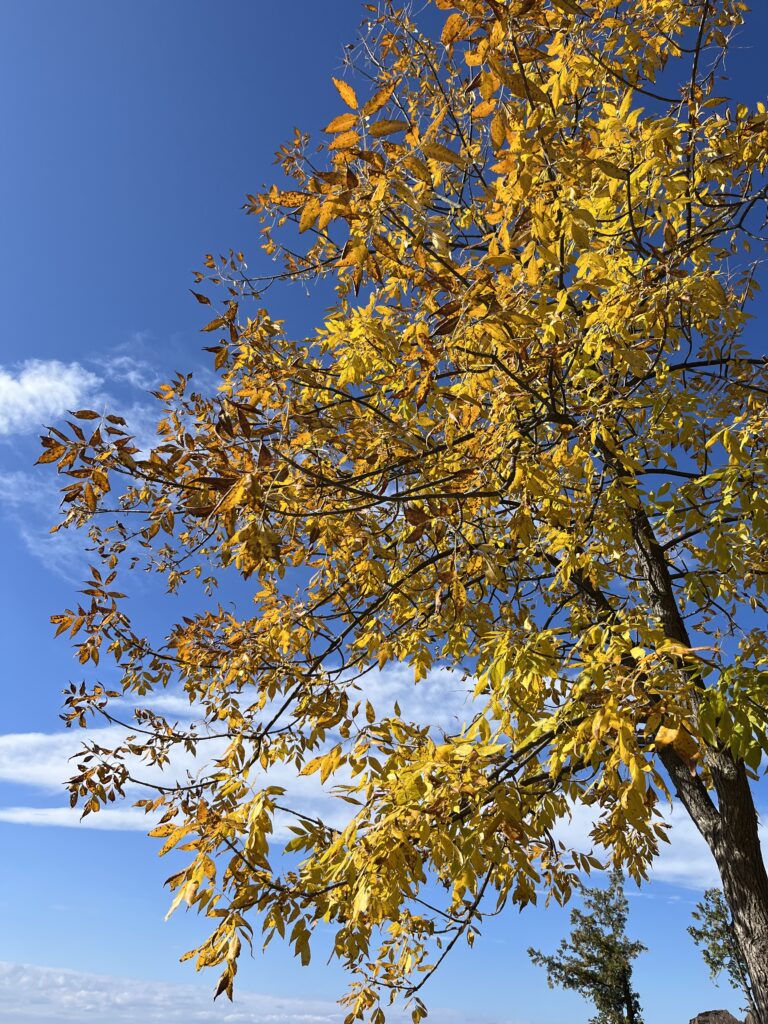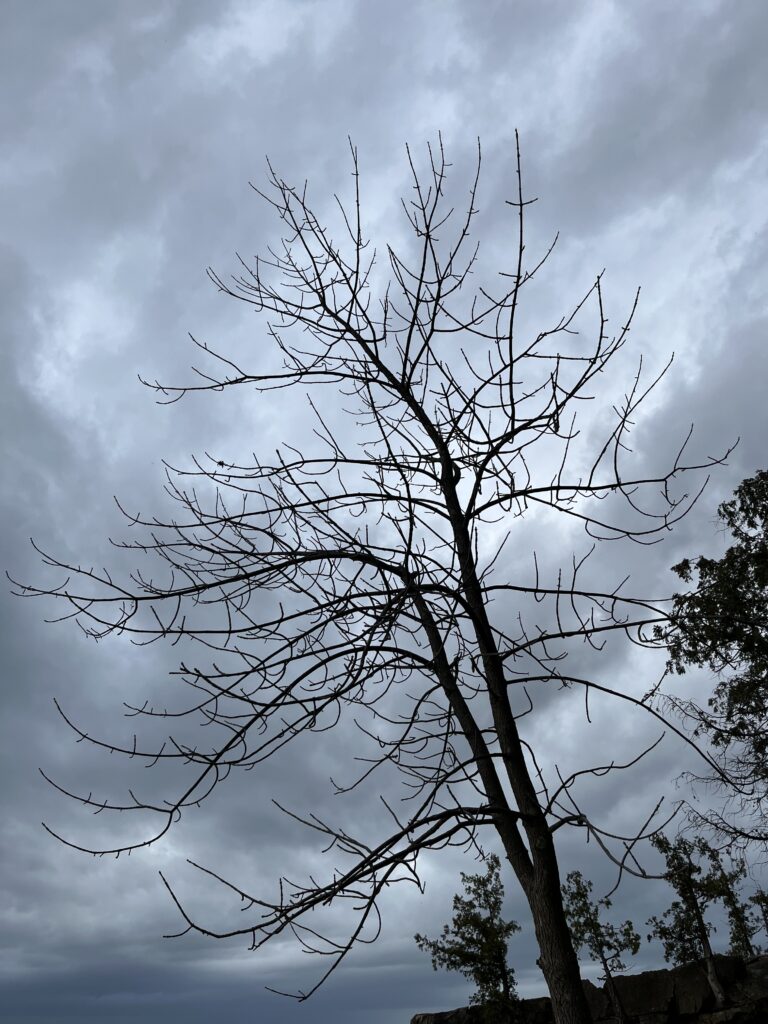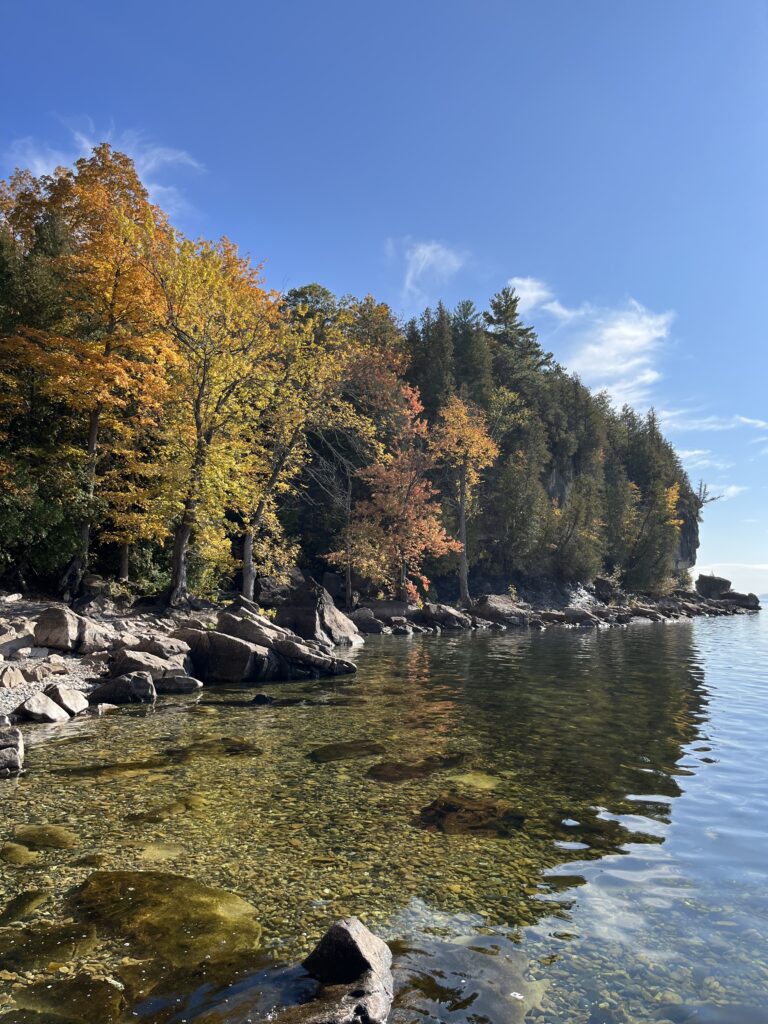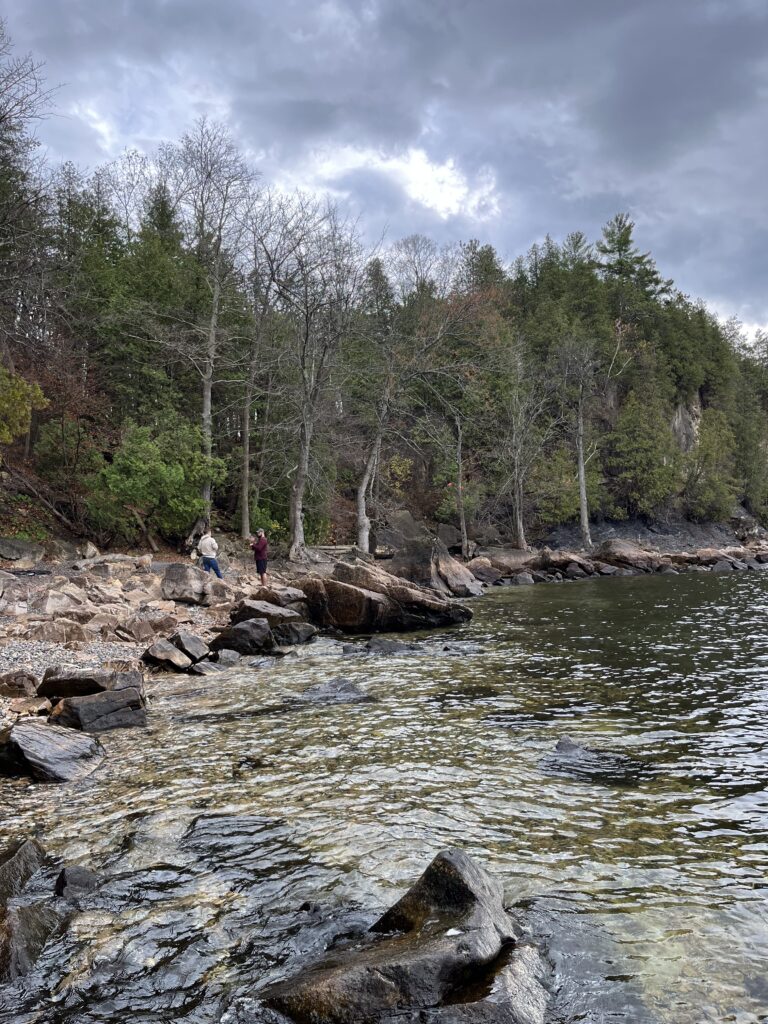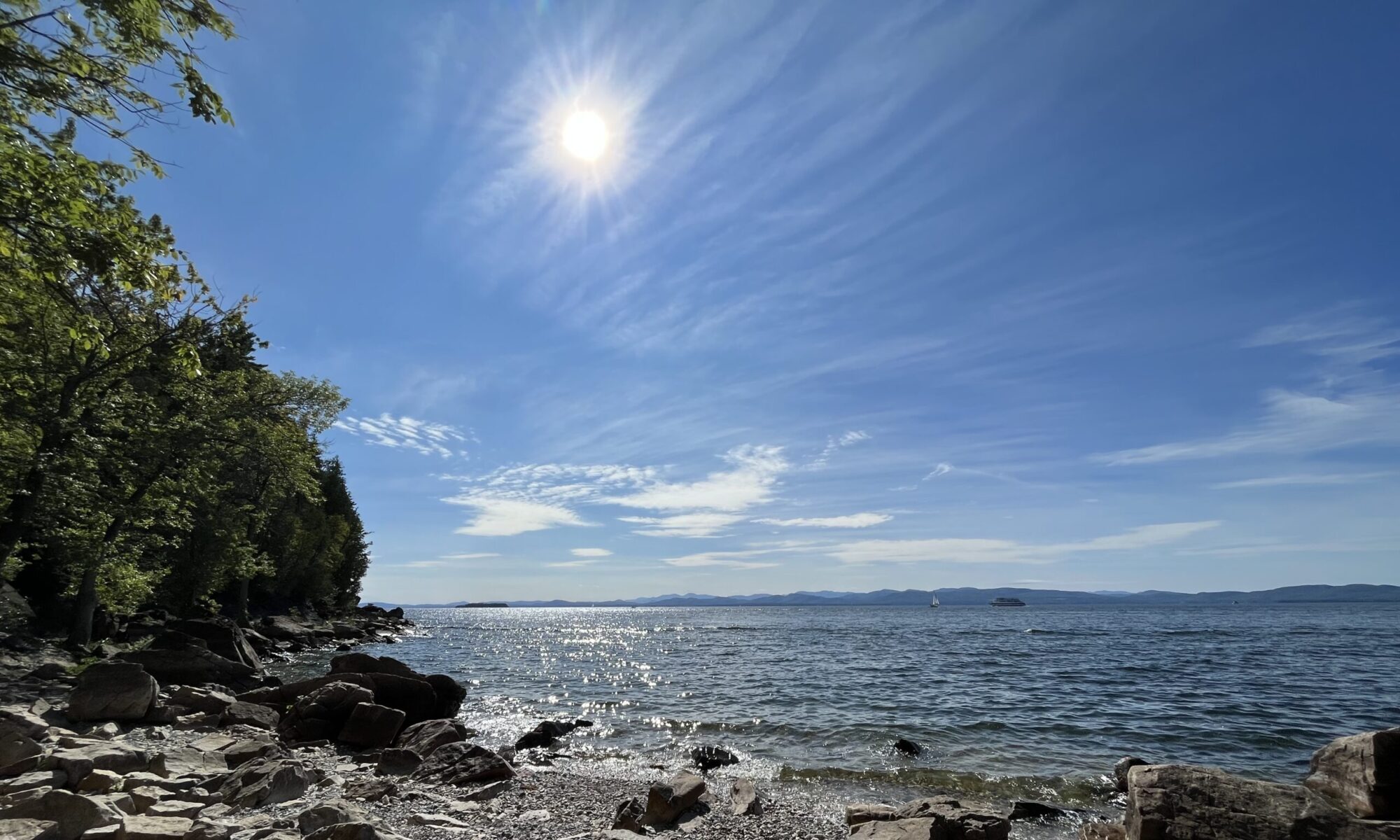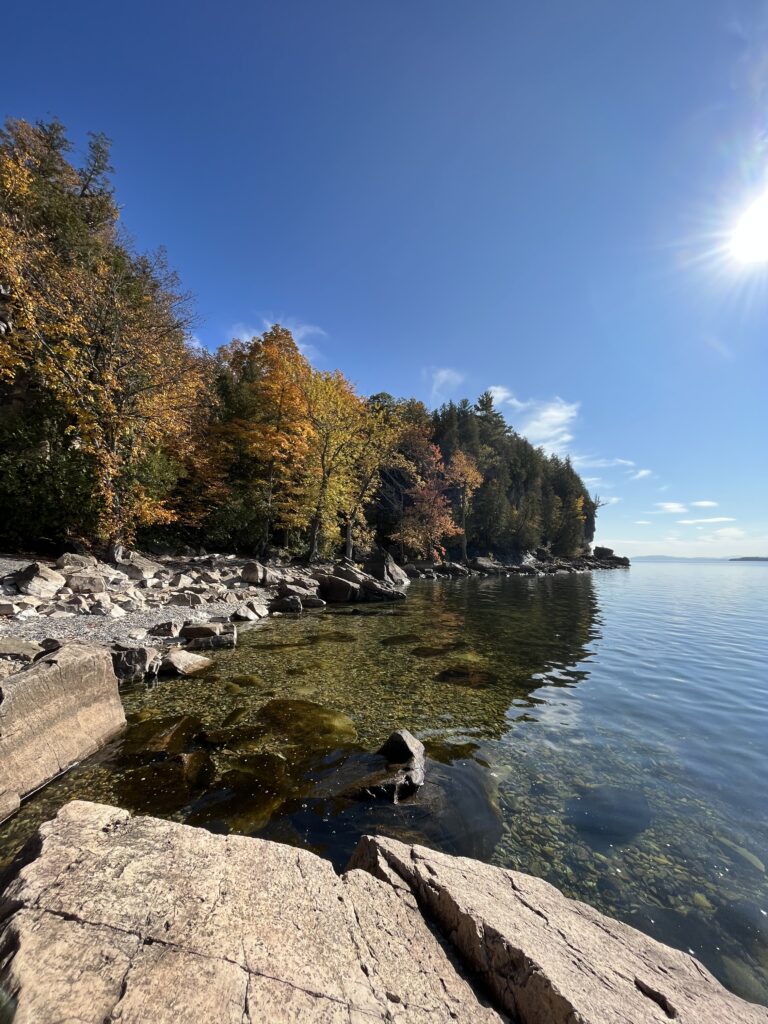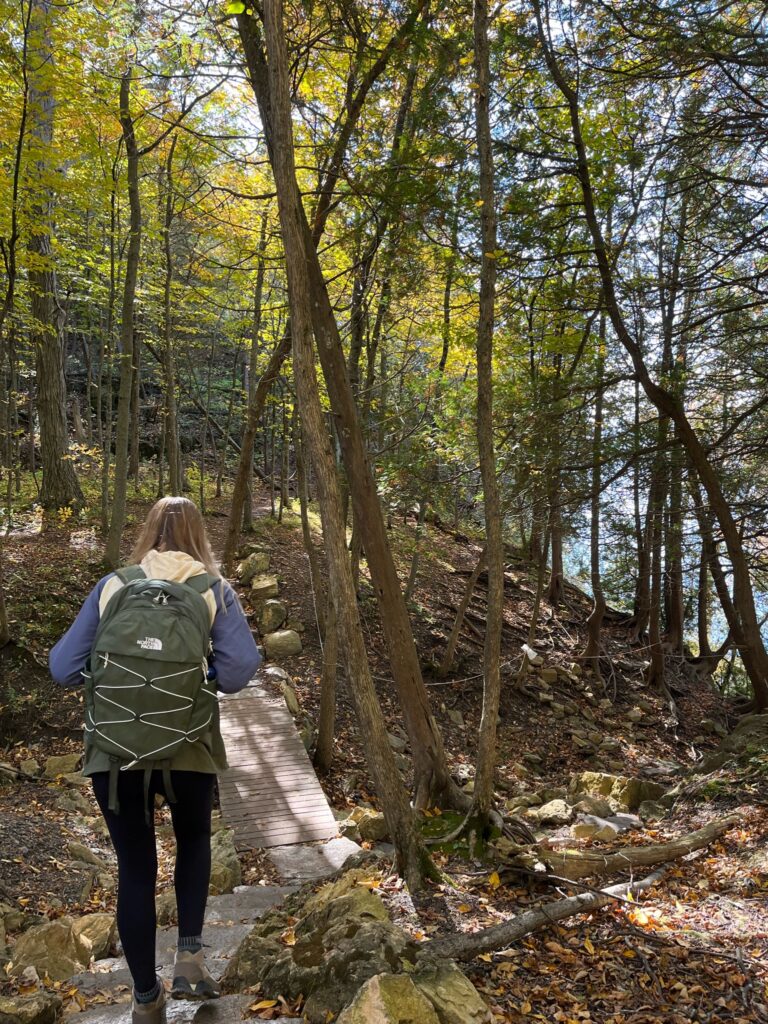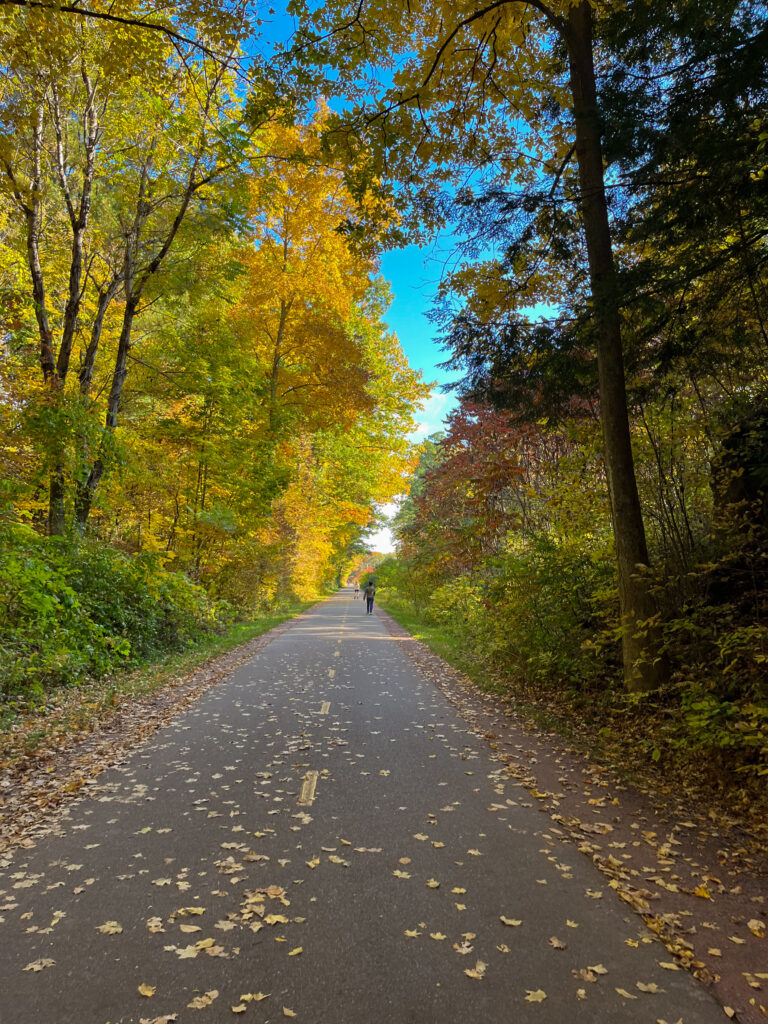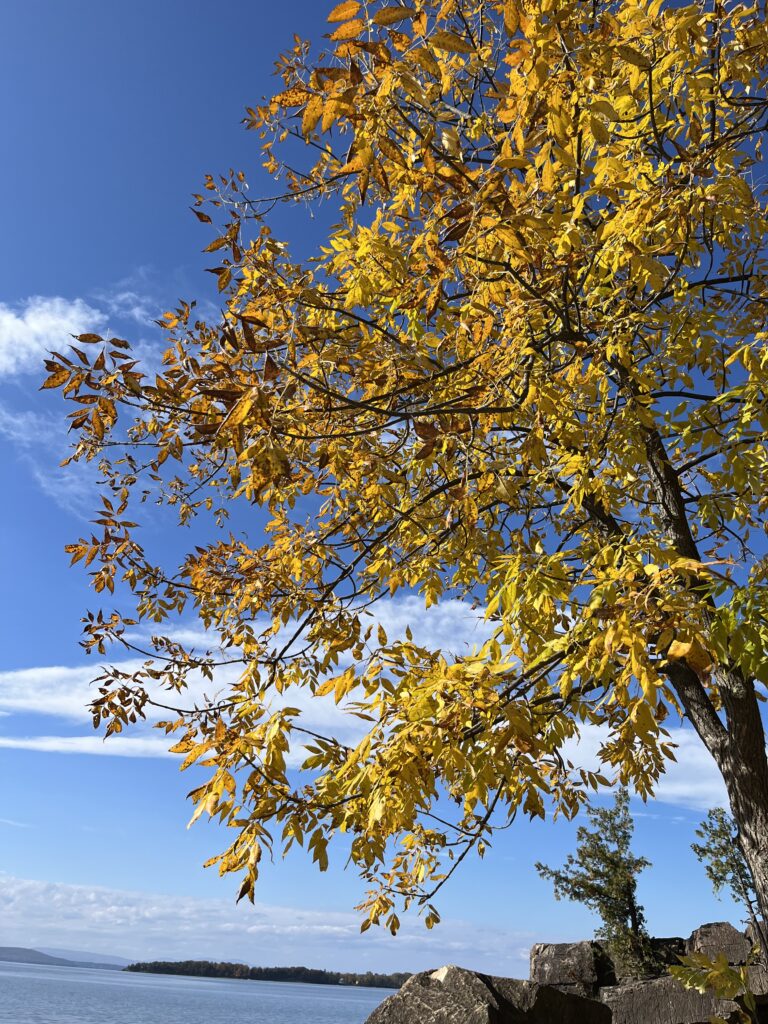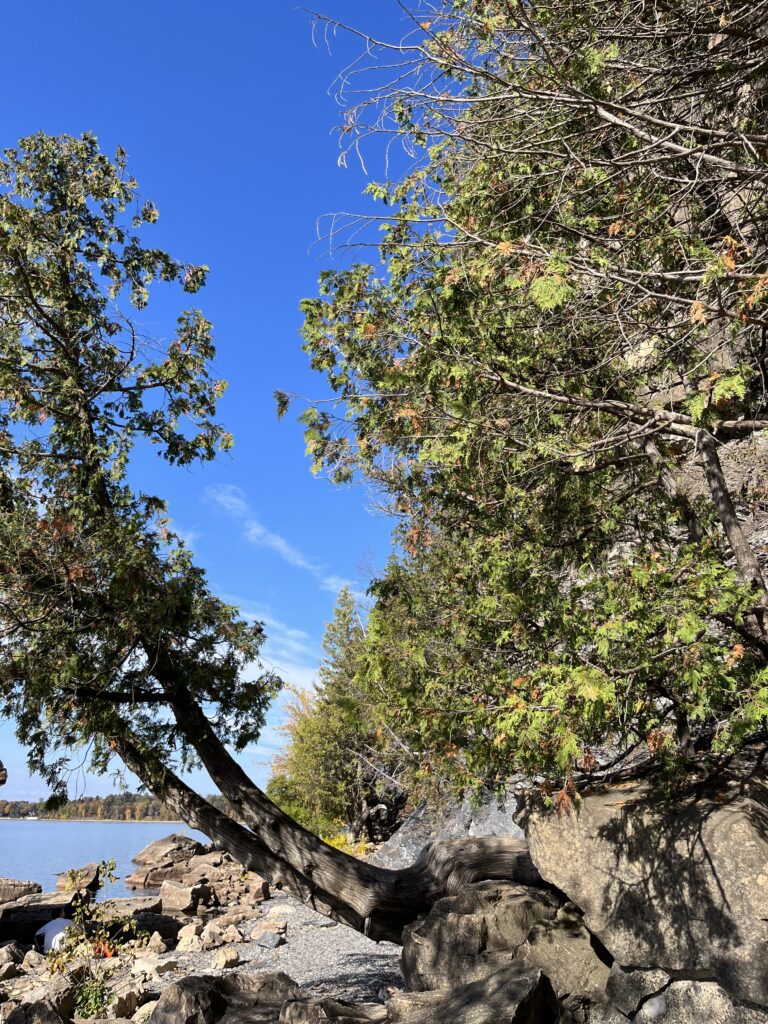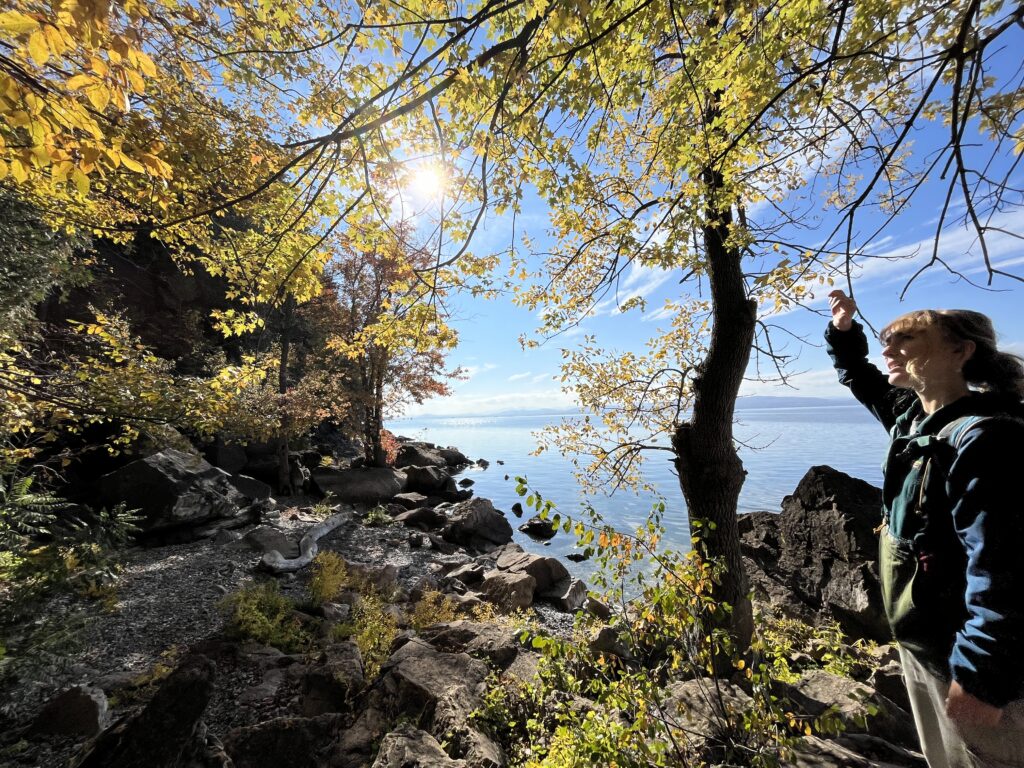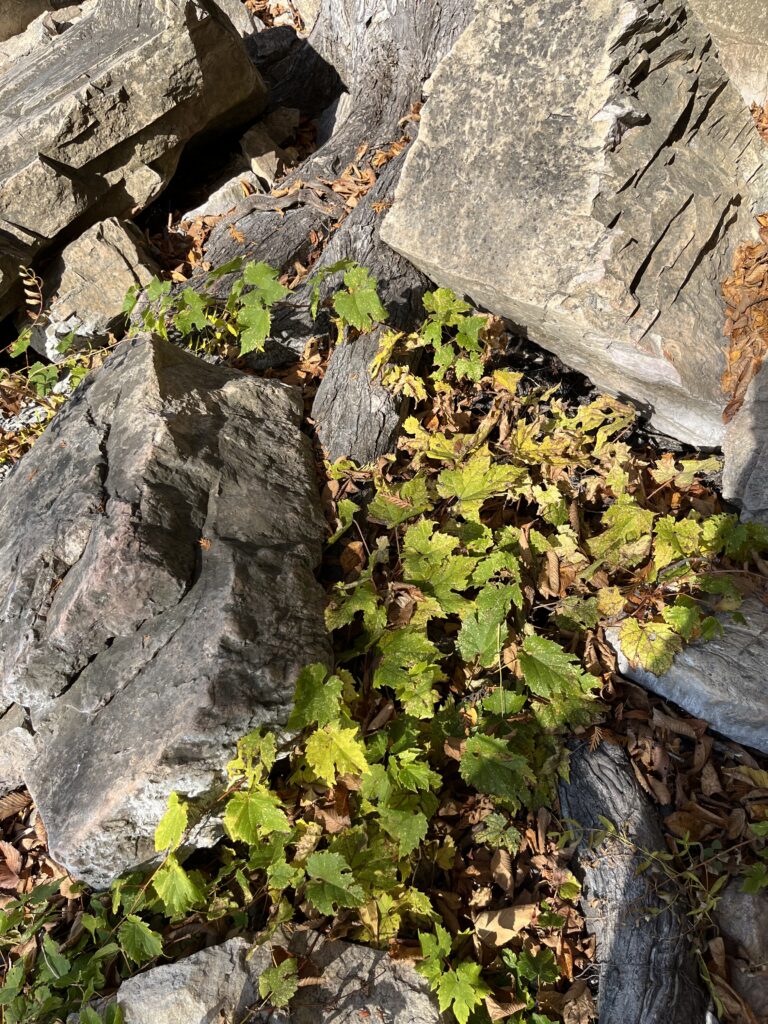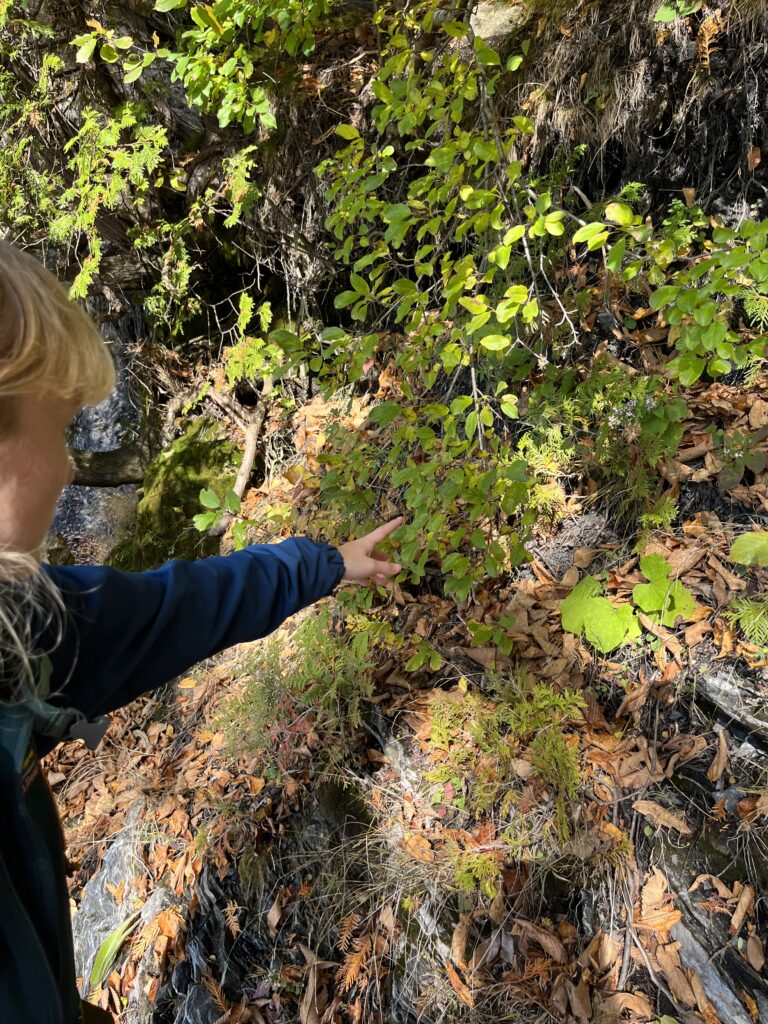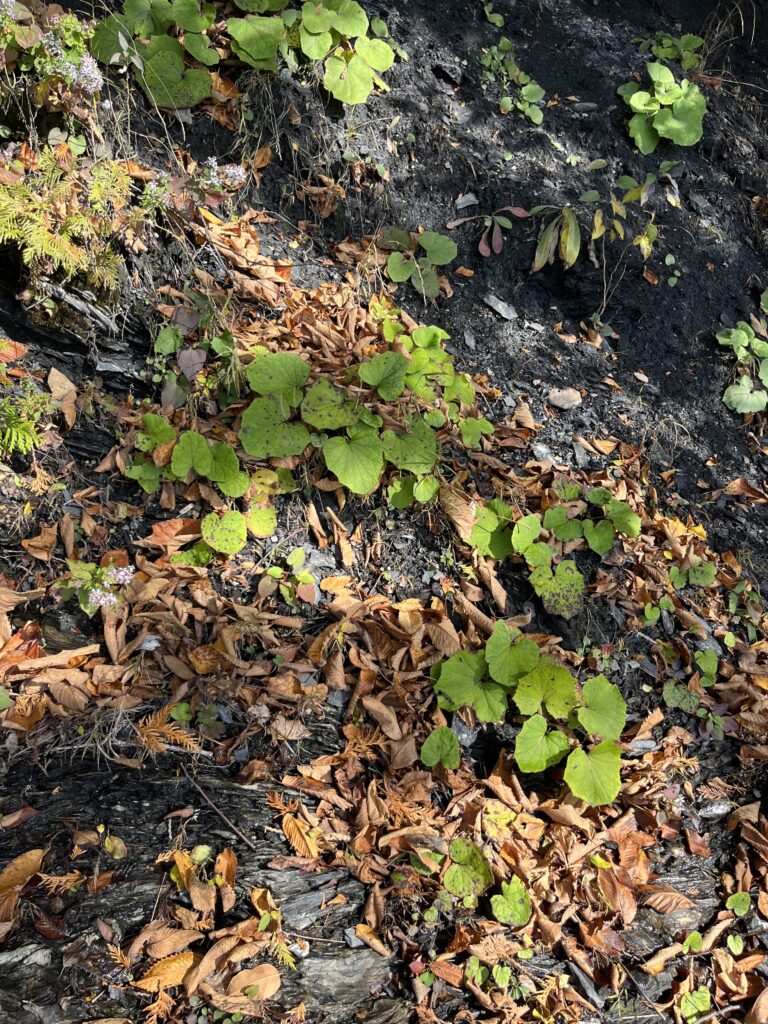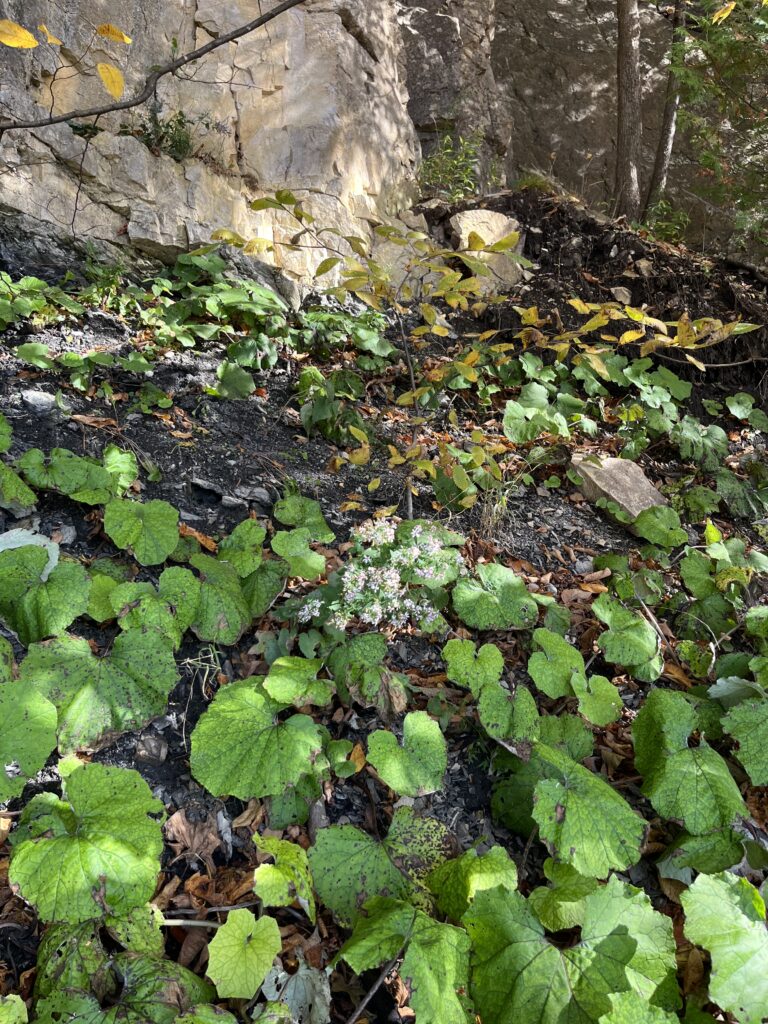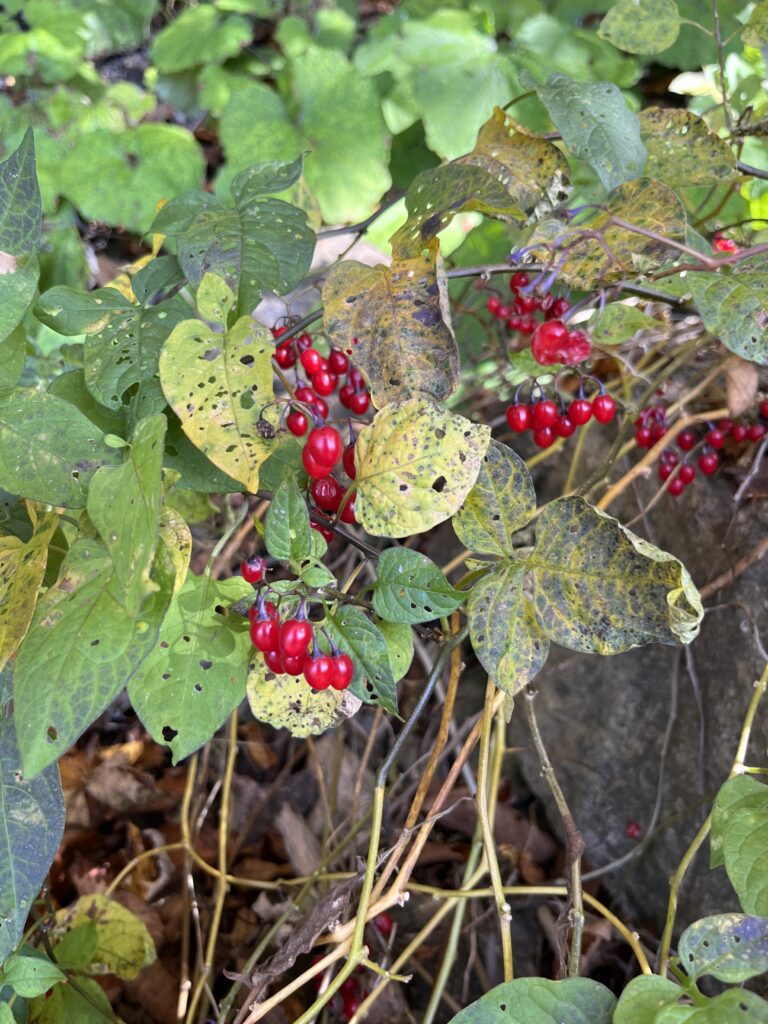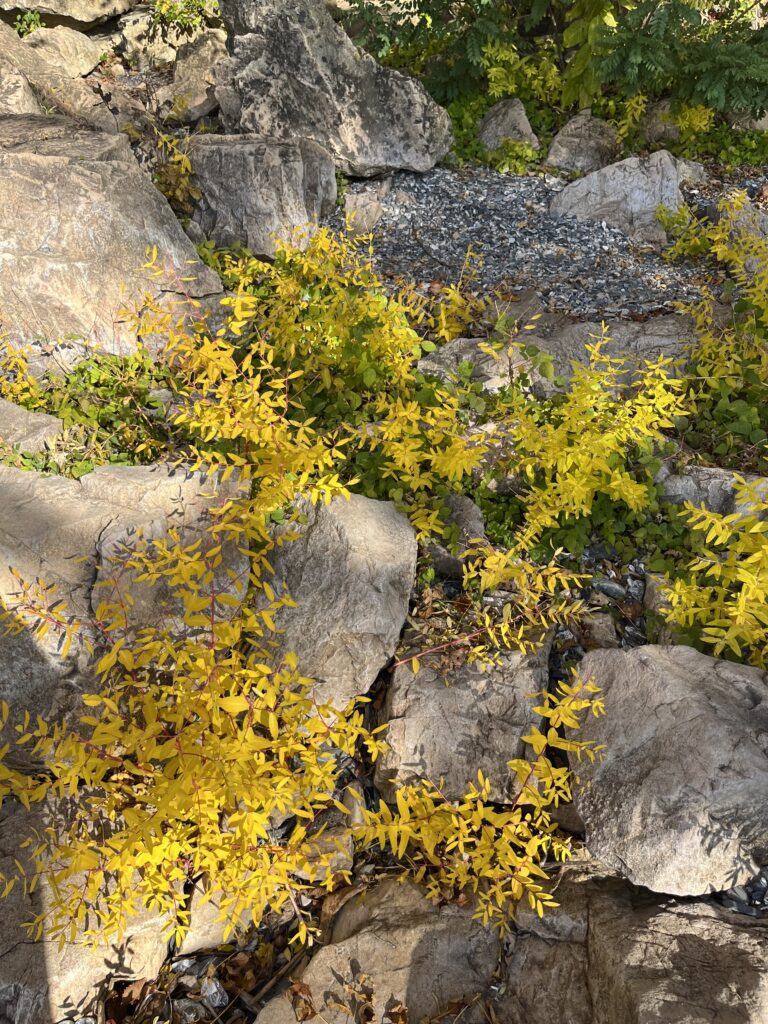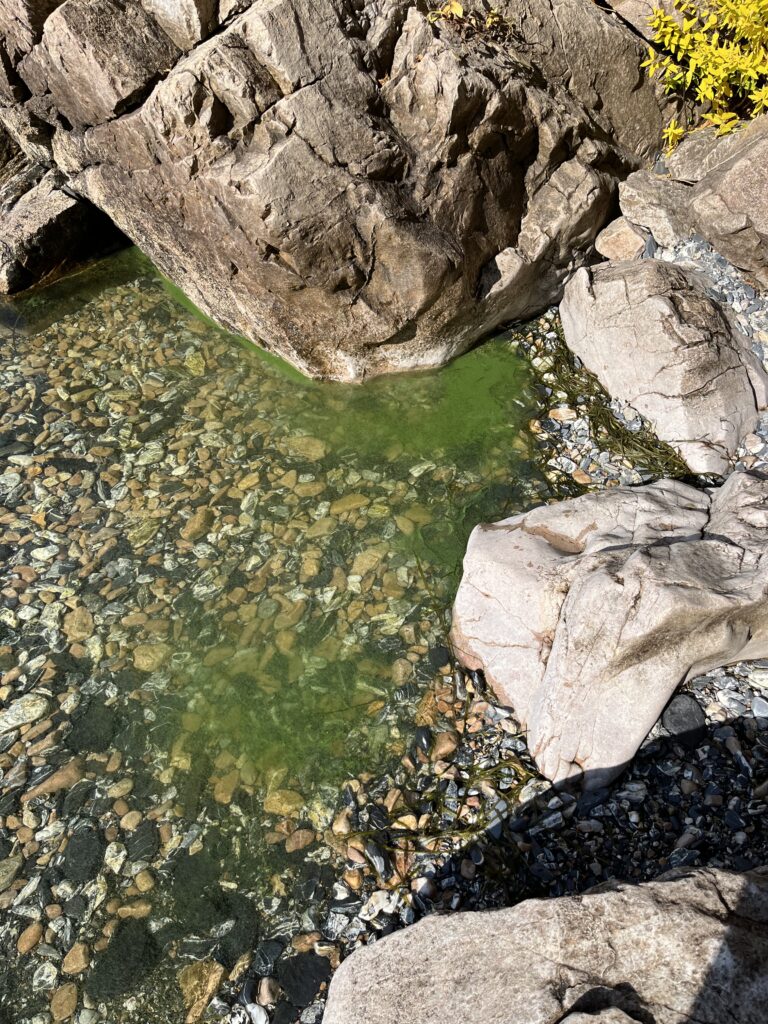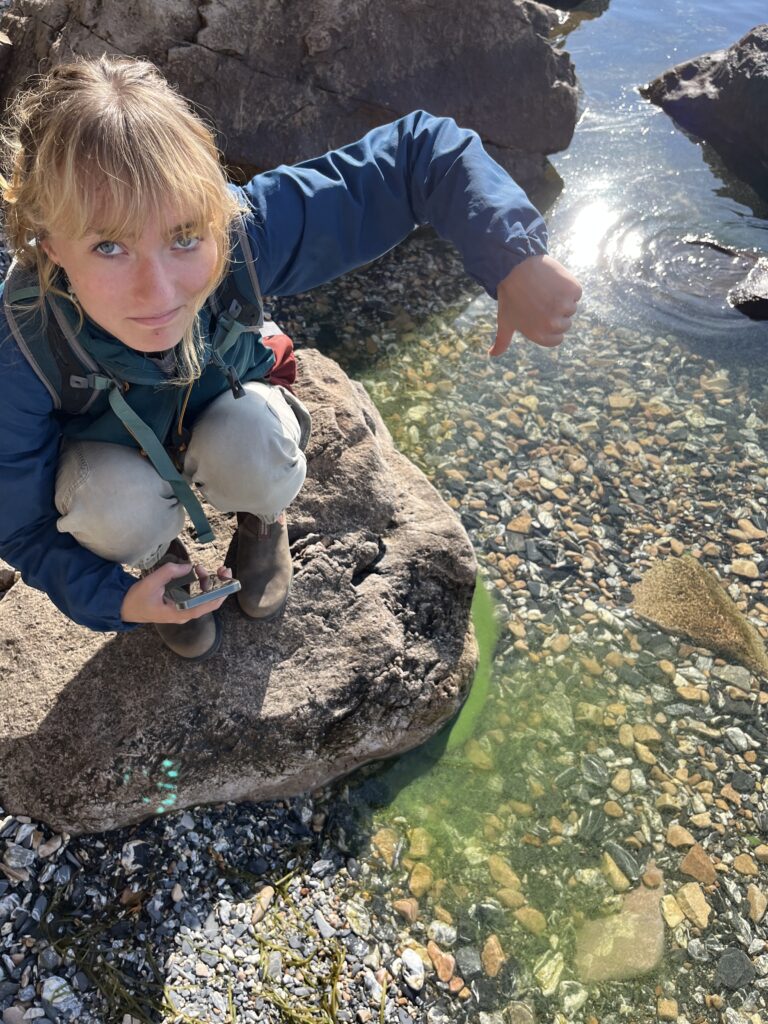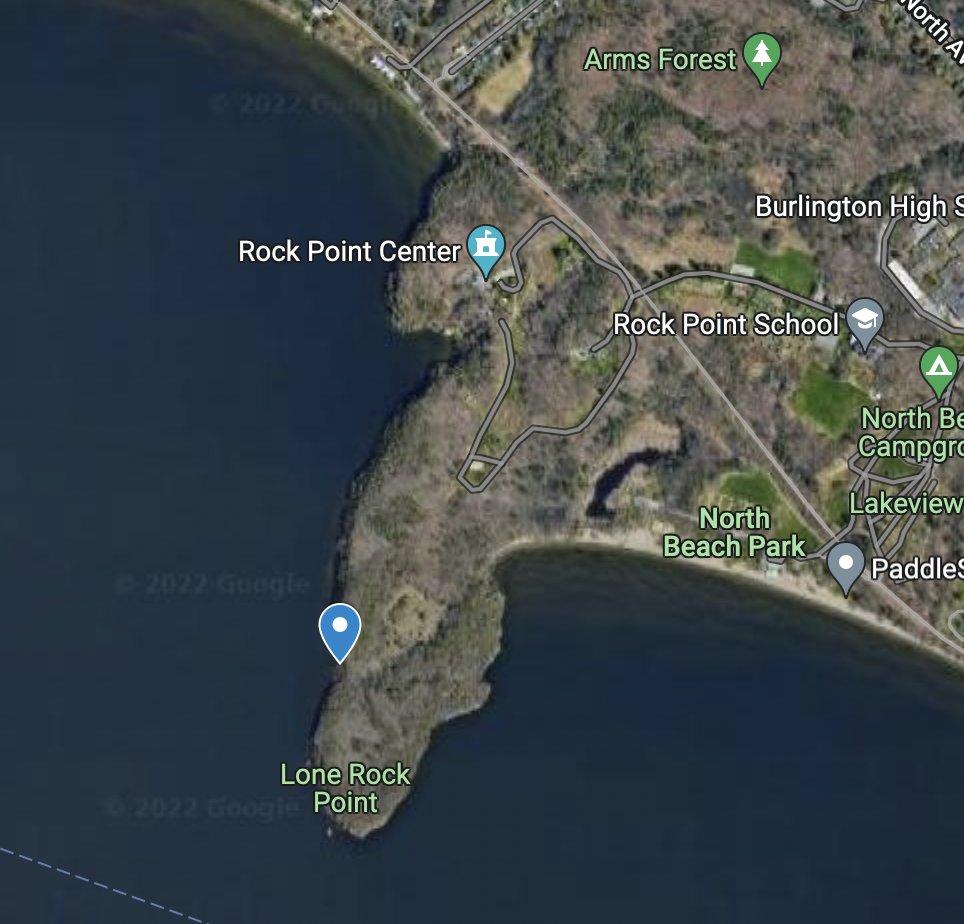As I mentioned in my first post, I found a ridge in one of the shoreline rocks that I like to call “chair rock” during my last visit. This perfect split in the rock creates a ledge to sit in and a layer of rock behind you to provide back support. In front of this “sit-spot,” there is another section of rock which is perfectly flat on one side. Although this section of rock does not necessarily cradle you in the same way, it creates a perfect spot for laying down and soaking up the sun. I imagine it would be a great place to tan in the summer, but for now, I simply lay there and take in the lake and mountains. Sitting there in my so-called “sit spot” for about fifteen minutes, I couldn’t help but think, “I’ll never get tired of seeing this view. I doubt these mountains will ever cease to amaze me.” Ever since arriving in Vermont back in August, I’ve been very conscious about my sense of place, in a way I never have been before. I feel a profound connection not just to the people here, but to my natural surroundings. Visiting Rock Point, and taking the time to just sit and observe reaffirmed that connection for me this weekend, and I feel incredibly lucky to be part of a class that facilitates such a relationship between person and place.
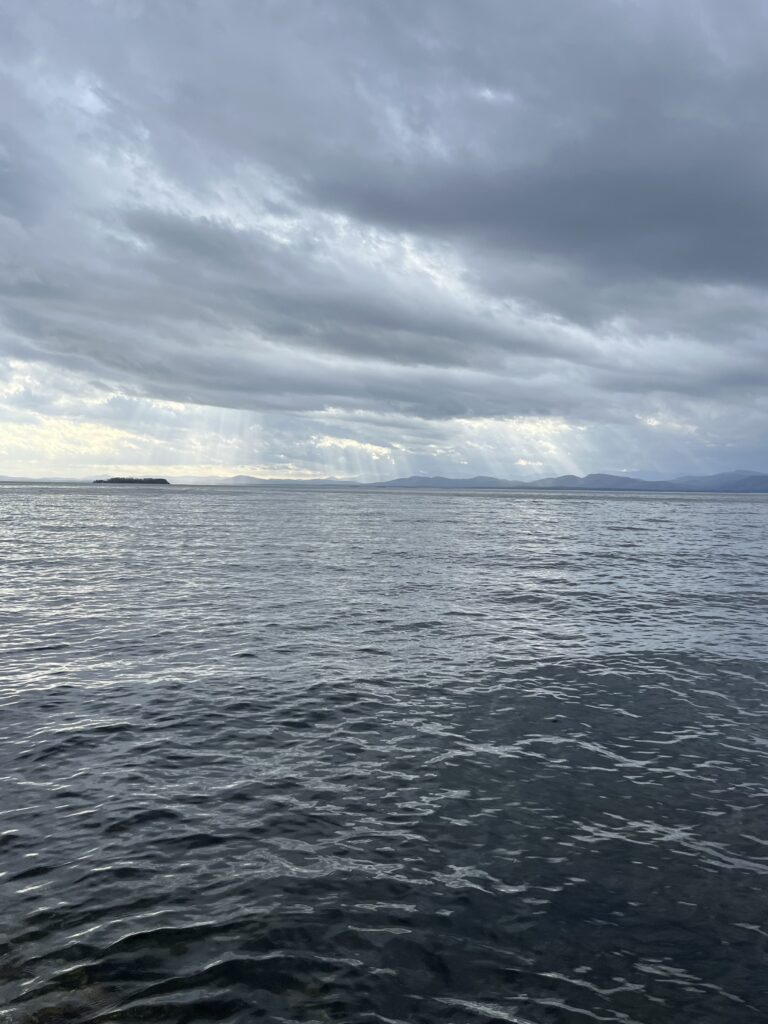
Changes in Vegetation Appearance
The temperature from my last visit to this one has been relatively stable (maybe even a little warmer this time around), but the landscape has taken on an entirely new look. The treeline that once painted the hiking path vibrant oranges, yellows, and greens, is now almost entirely brown, with a few hints of faded orange and green. The ground is dotted with dying leaves that give an orange tint to the area, but the canopy itself is now primarily open. The Northern White Cedars along the thrust fault still contribute some vibrant greens to the landscape where the vivid yellows of the American Beech are absent.
